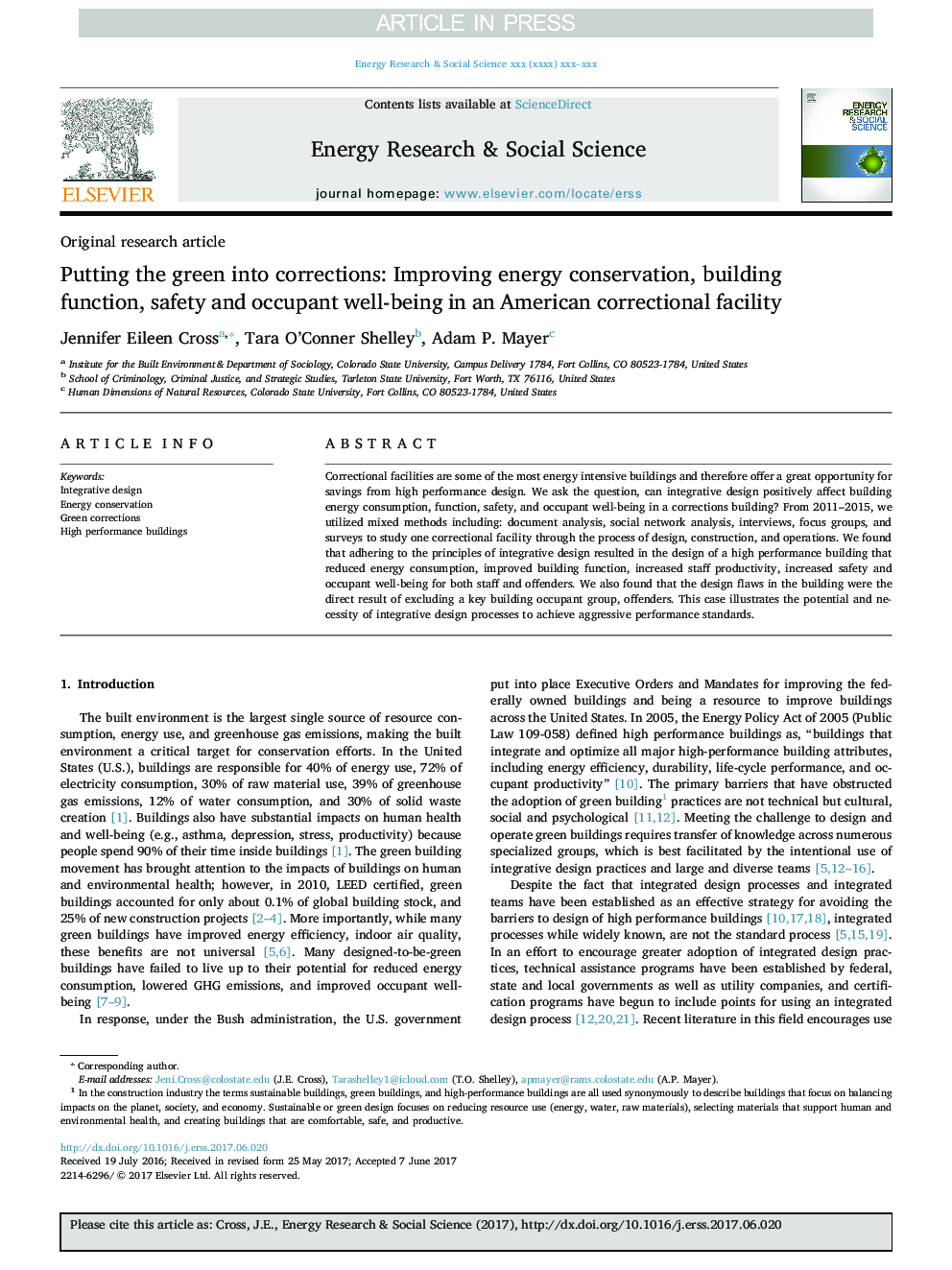| Article ID | Journal | Published Year | Pages | File Type |
|---|---|---|---|---|
| 4761672 | Energy Research & Social Science | 2017 | 15 Pages |
Abstract
Correctional facilities are some of the most energy intensive buildings and therefore offer a great opportunity for savings from high performance design. We ask the question, can integrative design positively affect building energy consumption, function, safety, and occupant well-being in a corrections building? From 2011-2015, we utilized mixed methods including: document analysis, social network analysis, interviews, focus groups, and surveys to study one correctional facility through the process of design, construction, and operations. We found that adhering to the principles of integrative design resulted in the design of a high performance building that reduced energy consumption, improved building function, increased staff productivity, increased safety and occupant well-being for both staff and offenders. We also found that the design flaws in the building were the direct result of excluding a key building occupant group, offenders. This case illustrates the potential and necessity of integrative design processes to achieve aggressive performance standards.
Related Topics
Physical Sciences and Engineering
Energy
Energy (General)
Authors
Jennifer Eileen Cross, Tara O'Conner Shelley, Adam P. Mayer,
